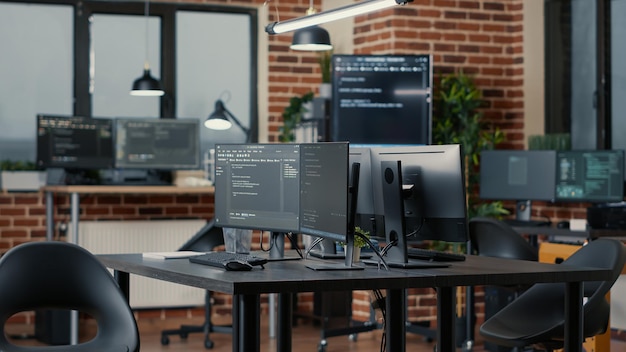What is Secure Software Development Life Cycle & Why it Matters
In today’s digital environment, where cyber-attacks are becoming increasingly sophisticated, securing your software or applications is paramount. Developers increasingly embrace cloud deployments as a software development trend, the associated security concerns multiply. To effectively mitigate these potential threats, it’s crucial to make security an integral part of the entire software development life cycle.
This is where the secure software development life cycle (SDLC) comes in. It addresses security vulnerabilities early in the concept and design stages, following a proactive and long-term security-first approach. Every phase of the secure SDLC is meticulously scrutinized to minimize risks, with insights and expertise from a trusted software development company.
1. Why is a Secure SDLC Important?
The era of digital transformation is filled with new technological advancements, promising efficient processes and cost-saving opportunities for businesses of all sizes. The shift to the cloud is a prime example, with many organizations already in the midst of their transition. While migrating legacy systems to the cloud offers numerous benefits, it also introduces a host of security challenges. Businesses that are unprepared to address these risks leave themselves vulnerable to cyber-attacks.
A secure SDLC plays a pivotal role in establishing robust application security. It ensures that security remains a top priority throughout the software’s lifecycle, from conception to deployment and ongoing maintenance. By integrating security into every phase, potential vulnerabilities can be identified and addressed early on, preventing them from escalating into major breaches.
According to a recent report by IBM, the average cost of a data breach in 2023 was a staggering $4.45 million. A secure SDLC helps to significantly reduce the risk and impact of such breaches.
While open-source components can accelerate development, they also present security challenges. The open-source ecosystem is vast and constantly evolving, making it difficult to track and address all potential vulnerabilities. A secure SDLC incorporates processes for evaluating and managing the security risks associated with open-source components, ensuring that only secure and well-maintained components are used.
In essence, a secure SDLC empowers development teams to prioritize security, proactively address vulnerabilities, and continuously integrate new security measures as the software evolves. It fosters a culture of security awareness and ensures that the final product is resilient to the ever-changing threat landscape.
2. How Does Secure SDLC Work?
The secure software development life cycle comprises five key phases, each contributing to the overall security of the software or application.
2.1. Collecting Requirements
In this initial phase, security requirements are gathered from all stakeholders. These requirements can include:
- Confidentiality: Ensuring that sensitive data, like personal information, is only accessible to authorized users.
- Integrity: Protecting data from unauthorized modification or deletion.
- Availability: Ensuring that the software is accessible and operational when needed.
- Functional requirements: Defining how the software should function, including security-related features like user authentication and authorization.
2.2. Design Phase
The requirements collected in the previous phase are translated into a blueprint for the software’s design. This includes both functional design and security design considerations. Threat modeling is often employed during this phase to anticipate potential threats and design countermeasures.

2.3. Development Phase
The development phase involves writing code and integrating components to build the software. Secure coding practices are essential to prevent the introduction of vulnerabilities during development. These practices might include:
- Input validation: Sanitizing all user input to prevent injection attacks.
- Output encoding: Protecting against cross-site scripting (XSS) attacks.
- Error handling: Preventing information leakage through error messages.
- Secure use of cryptography: Properly encrypting sensitive data at rest and in transit.
2.4. Verification Phase
Even after deployment, the software requires ongoing maintenance and updates. Security remains a critical concern, and any identified vulnerabilities must be promptly addressed. A proactive approach to security monitoring, incident response, and patch management is crucial to ensure the software’s continued resilience against evolving threats.
2.5. Maintenance and Evolution
Once the verification phase is over and there are no vulnerabilities, the software is ready for release. However, this doesn’t mean that security testing is no longer relevant. In fact, vulnerabilities can slip into the system just after deployment; hence maintenance and evolution should always follow a security-first approach.
During this stage, any vulnerabilities found should be traced to the source to help uncover other underlying issues. At a point in the software development timelines, this would mean rewriting the application functionality and rethinking the use of open source components in future projects.
3. Popular SDLC Models in the Market
Several secure software development lifecycle models are commonly used:
- Waterfall Model: A linear and sequential model where each phase must be completed before moving to the next.
- Spiral Model: An iterative model that focuses on risk management and incorporates prototyping and feedback loops.
- Agile Model: An iterative and incremental model that emphasizes flexibility and collaboration.
- DevSecOps: An approach that integrates security into the DevOps process, ensuring continuous security throughout the development lifecycle.
Choosing the right SDLC model depends on the project’s specific requirements, team structure, and risk tolerance.
4. How to Succeed With Secure SDLC Implementation
Implementation In Software Development Life Cycle requires a well-defined strategy and a commitment to security at all levels of the organization. Key steps for success include:
- Conduct a gap analysis: Assess your current security posture and identify areas for improvement.
- Create a software security plan: Define security objectives, roles and responsibilities, and processes for addressing vulnerabilities.
- Provide security training: Educate your team on secure coding practices, security tools, and the importance of a security-first mindset.
- Use the right tools: Leverage application security testing tools, static and dynamic analysis, and other security technologies to automate vulnerability detection and remediation.
- Foster a culture of security: Encourage open communication about security risks and promote a collaborative approach to addressing vulnerabilities.

5. Make Security a Top Priority
Building secure and scalable software demands continuous effort. By making security an integral part of your software development life cycle, you can protect your applications, your data, and your users from the ever-present threat of cyber-attacks.
Remember, a secure SDLC is not a one-time event; it’s an ongoing process that requires vigilance and adaptation to the evolving threat landscape. Partner with a trusted software development company to ensure your software development process is secure from the start.
Secure Software Development Life Cycle: Conclusion
In today’s digital world, where cyber threats are constantly evolving, prioritizing security throughout the software development lifecycle is paramount. A secure SDLC enables you to proactively identify and mitigate vulnerabilities, ensuring that your software is resilient to attacks and protects sensitive data.
By following the best practices outlined in this article and integrating security into every phase of development, you can create high-quality, secure software that meets the needs of your users and safeguards your business. Remember, a secure SDLC is not just a technical process, it’s a cultural shift that requires commitment and collaboration from everyone involved in the software development process.
Looking To Find A Trusted Tech Partner?
Since 2009, Savvycom has been leveraging digital technologies to support businesses, midsize and large enterprises, as well as startups across various industries. Specializing in tech consulting, end-to-end product development, cloud services, and DevOps, we excel in delivering high-quality software solutions and products. Additionally, we offer a broad spectrum of related professional software development services tailored to meet your specific needs.
Savvycom is right where you need. Contact us now for further consultation:
- Phone: +84 24 3202 9222
- Hotline: +1 408 663 8600 (US); +612 8006 1349 (AUS); +84 32 675 2886 (VN)
- Email: [email protected]


